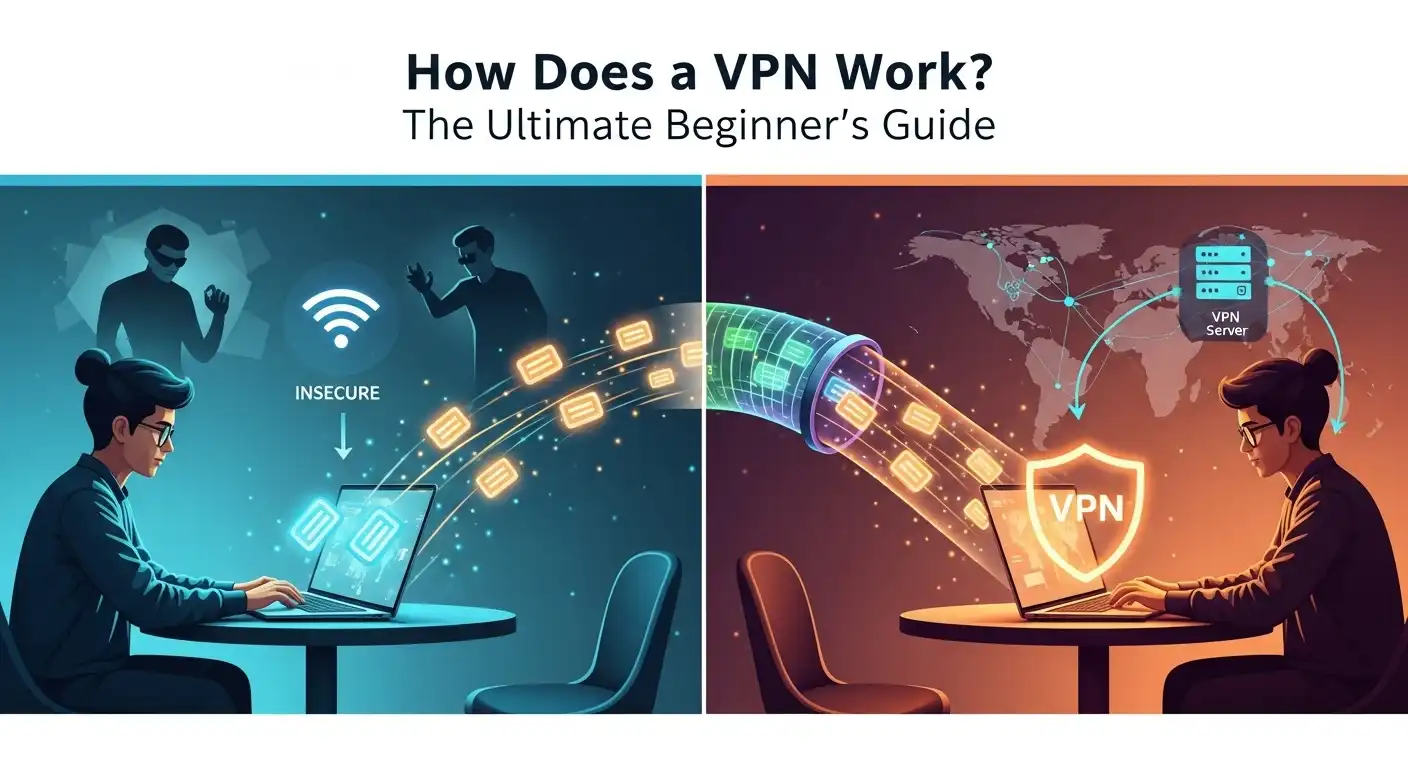In today's hyper-connected world, our digital lives are more exposed than ever. From online banking to simple web browsing, we leave a trail of data that can be tracked, collected, and potentially misused. This growing concern for online privacy and security has led many to seek out tools that can protect their digital footprint. One of the most powerful and popular of these tools is a VPN. But this raises the crucial question for anyone new to the concept: what is a vpn and how does it work? This guide will demystify the technology, breaking down its complex mechanics into simple, understandable concepts to empower you to take control of your online security. How Does a VPN Work? The Ultimate Beginner's Guide What is a VPN, Really? A Simple Explanation Imagine the internet is a busy public highway. Every car on this highway (representing your data) has a visible license plate (your IP address), and anyone watching—your Internet Service Provider (ISP), advertisers, hackers, or government agencies—can see where you're coming from and where you're going. They can even try to peek inside your car to see what you're carrying. A Virtual Private Network, or VPN, fundamentally changes this scenario. It creates a private, encrypted tunnel for your car through this public highway. Now, your car is completely obscured inside an armored transport vehicle, its license plate is swapped for one from the transport company, and no one can see where you're really going or what you're carrying. Breaking down the name itself helps clarify its function. Virtual means it's a digital creation; you're not using a physical, private cable to connect to the internet, but software is creating a private condition for you. Private is the key benefit; instead of your traffic being open for inspection, it's shielded from prying eyes. Network refers to the fact that you are connecting to a secure network of servers run by the VPN provider, which then connects you to the wider internet. It's important to understand that a VPN is more comprehensive than a simple web proxy. While a proxy can hide your IP address for your web browser traffic, a VPN works at the operating system level. This means it secures and encrypts all the traffic coming from your device—whether it's from your browser, a gaming application, an email client, or a background software update. This system-wide protection is what makes a VPN an essential tool for comprehensive digital privacy, not just casual anonymous browsing. The Core Mechanics: How a VPN Secures Your Connection At its heart, the process of a VPN working is a sophisticated dance of encryption and redirection. When you're not using a VPN, your device connects directly to your ISP, which then connects you to the website or service you want to access. Your ISP can see every site you visit. With a VPN, an extra, crucial step is added. When you click "Connect" on your VPN application, it establishes a secure connection to a remote server owned by your VPN provider. All your internet traffic is then routed through this server before it reaches its final destination. This rerouting process is what creates the "VPN tunnel." Your data is first encapsulated—placed inside other data packets—and then encrypted. This encrypted package is sent through your ISP to the VPN server. Your ISP can see that you are sending data to a VPN server, but thanks to the encryption, it has no idea what that data is or where its final destination is. Once your data reaches the VPN server, it is decrypted and sent on to the public internet. The website or service you are accessing sees the request as coming from the VPN server, not from your personal device. This effectively masks your real location and identity. This entire sequence provides two primary security benefits: encryption and IP address masking. The encryption acts like an unbreakable lockbox for your data, making it unreadable to anyone who might intercept it, such as a hacker on a public Wi-Fi network. The IP address masking makes you appear to be in the same geographic location as the VPN server you've connected to. If you're in New York and connect to a VPN server in Tokyo, websites will see your traffic as originating from Tokyo. This is the mechanism that allows you to bypass geo-restrictions and enhance your online anonymity. The Encryption Process: Making Your Data Unreadable Encryption is the bedrock of VPN security. It is the process of converting your readable data (plaintext) into a scrambled, unreadable code (ciphertext). To unscramble this code, you need a specific "key." Think of it as writing a message in a secret language that only you and your intended recipient know how to translate. A VPN client on your device and the VPN server share a secure key. When you send data, your VPN client uses this key to encrypt it. The data travels across the internet in its scrambled form, and only when it reaches the VPN server can it be decrypted using the corresponding key. Modern, reputable VPNs use incredibly strong encryption standards. The most common is AES-256 (Advanced Encryption Standard with a 256-bit key). This is often marketed as "military-grade encryption" because it's the same standard used by the U.S. government to protect classified information. A 256-bit key has a staggering number of possible combinations (2 to the power of 256), making it virtually impossible to break with current computing technology. A brute-force attack, where a computer tries every possible combination, would take billions of years to crack a single key. This level of security ensures that even if your data were intercepted, it would be nothing more than unintelligible gibberish to the snooper. VPN Protocols: The Rules of the Tunnel While encryption scrambles your data, a VPN protocol determines how the secure tunnel itself is built and maintained. A protocol is essentially a set of rules and instructions that govern the data transfer between your device and the VPN





